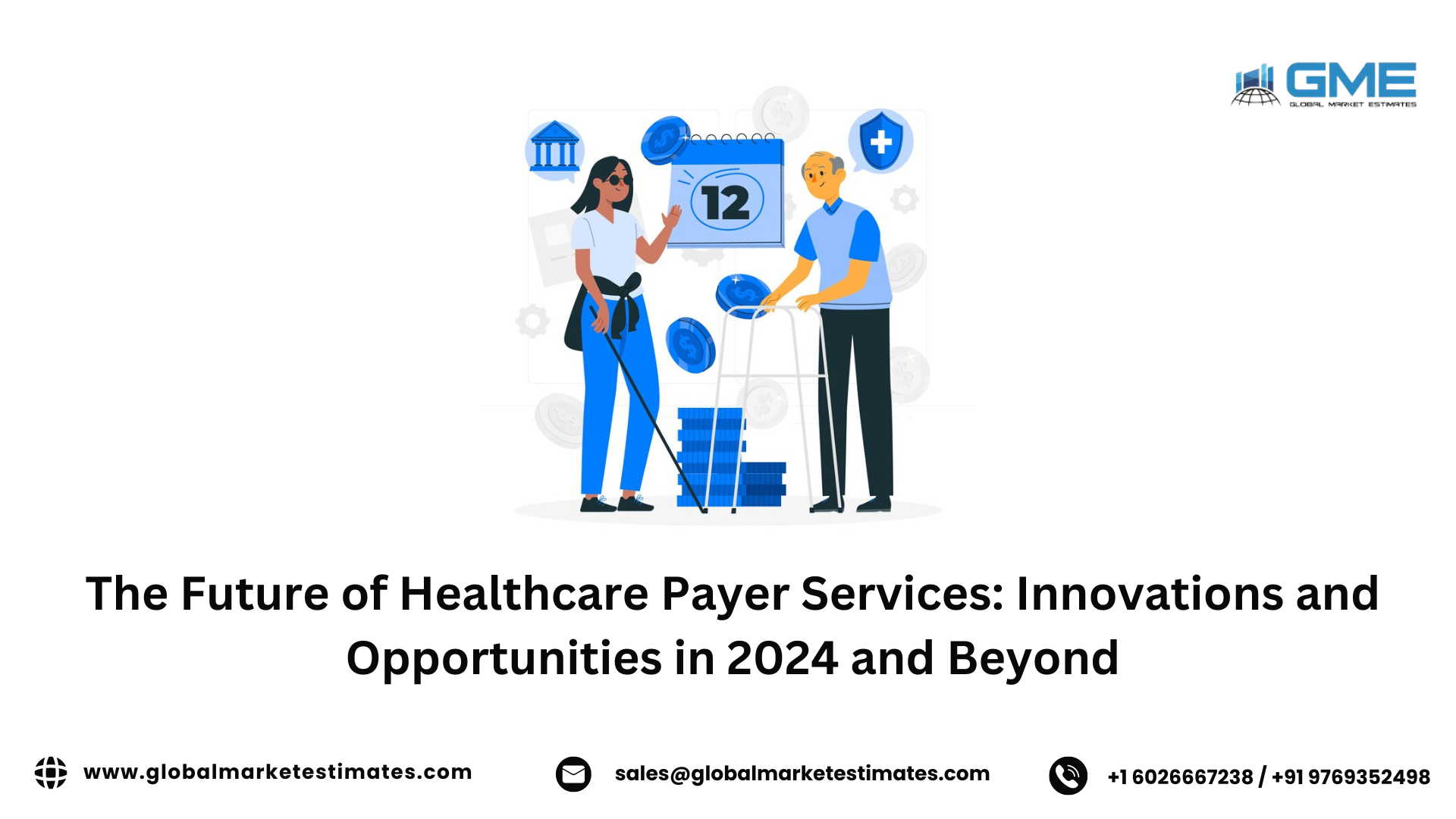
The Future of Healthcare Payer Services: Innovations and Opportunities in 2024 and Beyond
In the constantly changing field of healthcare payer services, 2024 indicates a turning point characterized by revolutionary advancements and enhancements in technology. While examining healthcare payer services in the future, it becomes apparent that key themes such as healthcare payer trends in 2024, healthcare payer technology advancements, and the future of payer-provider collaboration are poised to shape the industry's trajectory.
Healthcare Payer Trends 2024
The year 2024 brings forth a confluence of trends reshaping healthcare payer services. One prominent trend is the increasing adoption of value-based care models, aimed at optimizing patient outcomes while containing costs. Payers are recalibrating their strategies to prioritize preventive care, chronic disease management, and patient-centric interventions. Embracing predictive analytics in payer services, insurers leverage data insights to forecast health risks, tailor interventions, and allocate resources efficiently.
Healthcare Payer Technology Advancements
The realm of healthcare payer technology witnesses unprecedented advancements, propelled by the burgeoning adoption of artificial intelligence (AI) and blockchain. AI in healthcare payer services redefines claims processing, fraud detection, and customer service through automation and cognitive computing. For instance, in 2023, the National Health Care Anti-Fraud Association estimated that global Medicare insurance fraud exceeds USD 100 billion annually. AI-powered algorithms analyze vast amounts of data to identify patterns, predict health risks, and optimize resource allocation, empowering payers to make data-driven decisions and improve operational efficiency.
Blockchain technology is another innovation poised to transform healthcare insurance. Blockchain in healthcare insurance fosters transparent, secure, and immutable transactions, facilitating streamlined data exchange and enhancing trust among stakeholders. Additionally, by providing a secure and transparent platform for managing sensitive data, blockchain has the potential to streamline administrative processes, enhance data interoperability, and reduce administrative costs. Smart contracts powered by blockchain can automate payment and reimbursement processes, thereby improving efficiency and reducing errors. For instance, the National Library of Medicine (2022) claims that blockchain technology enables health system interoperability by offering a decentralized ledger of acknowledged facts in medical records that is accessible to all healthcare providers.
Digital transformation in healthcare insurance is revolutionizing the way payers interact with members and manage their health. With technology integration, payers are enhancing member experiences and operational efficiency. Remote patient monitoring solutions enable continuous tracking of vital signs and symptoms, facilitating proactive interventions and reducing hospitalizations. For instance, according to a Harvard Health Letter article from 2022, there are around 50 million remote patient monitoring device users in the United States.
Additionally, telehealth integration with payer services expands access to virtual care, offering convenient consultations and reducing healthcare costs. Digital platforms streamline claims processing, enable personalized health recommendations, and empower members to take charge of their health. By leveraging digital solutions, healthcare insurers can deliver more efficient, accessible, and personalized care, ultimately driving better outcomes for members while optimizing costs and resources.
Data Interoperability in Healthcare Insurance
Data interoperability in healthcare insurance is essential for the seamless exchange and integration of health information across various systems and stakeholders. By fostering interoperable ecosystems, payers can access comprehensive, real-time data, enabling informed decision-making and improving care coordination. This interoperability facilitates personalized healthcare payer experiences, as payers leverage integrated data to tailor interventions and services to individual needs and preferences. However, with the increased sharing of sensitive health data, cybersecurity in payer services becomes paramount. Payers must implement robust cybersecurity measures and compliance protocols to safeguard member information from evolving threats such as ransomware and data breaches. By prioritizing data interoperability while ensuring stringent cybersecurity protocols, healthcare insurers can optimize care delivery, enhance member satisfaction, and safeguard sensitive health information effectively.
Genomics and Payer Services
The field of medicine is changing due to advances in genomics that provide insights into disease risk, treatment effectiveness, and customized therapy. Researchers predict that payer services will incorporate genetic data more deeply by 2024, allowing for more accurate risk assessment, focused interventions, and individualized treatment regimens. Payers can optimize resource allocation, enhance results, and reduce costs by utilizing genomics.
Health Equity Initiatives in Payer Services
The primary goals of healthcare payers are to promote health equity and address health inequities. As payers strive to lower obstacles to treatment, address socioeconomic determinants of health, and encourage equal access to high-quality healthcare services, people anticipate a greater emphasis on health equity programs in 2024. Targeted outreach programs, community collaborations, and culturally competent care delivery are all included in these activities, which aim to eliminate inequities and improve health outcomes for all participants.
Enhanced Member Engagement
Member engagement becomes a top goal for payers in the age of consumer-centric healthcare if they want to enable people to take charge of their health and successfully navigate the healthcare system. Payers are using interactive portals, smartphone applications, and digital communication channels to give proactive health reminders, schedule appointments more easily, and give individualized health information. Additionally, the use of chatbots and virtual assistants improves the entire member experience by enabling real-time support and assistance. Payers can promote healthy habits, enhance adherence to treatment programs, and save healthcare costs related to preventable complications by encouraging more involvement and accountability.
The future of payer services for healthcare will be defined by innovation, collaboration, and a never-ending pursuit of bettering client experiences and results. Through the use of technology, data analytics, and value-based care models, payers have the potential to influence the healthcare delivery landscape in 2024 and beyond significantly. There are countless potentials for innovation and progress during these revolutionary times, which will help create a healthcare ecosystem that is more effective, just, and long-lasting.
